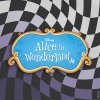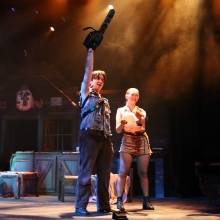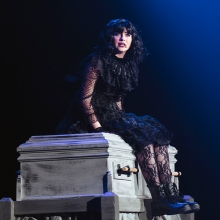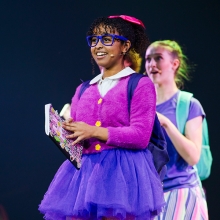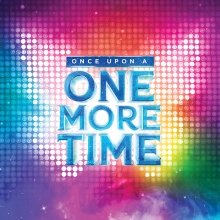On Friday, August 30th, the MTI office will close at 1 PM ET for the Labor Day holiday weekend and remain closed through Monday, September 2nd. Office operations will resume on Tuesday, September 3rd.
Filichia Features: Advice to The Producers
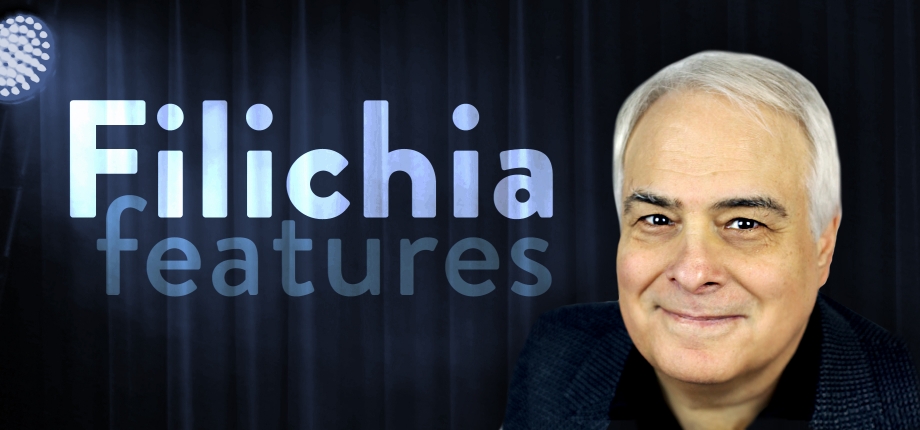
Filichia Features: Advice to The Producers
So what did Mel Brooks and Thomas Meehan do after their musical The Producers opened to rave reviews, smash business and a record-setting 12 Tony awards?
No, it wasn't Young Frankenstein. Before that Brooks and Meehan wrote a book entitled The Producers: How We Did It.
It's a great read and it may well give you some salient ideas on how you can do The Producers -- especially if you can't get to the Paper Mill Playhouse in Millburn, New Jersey where it's now being done quite well.
Backdrop designers, remember that The Producers takes place in 1959. Don’t paint marquees for The Nederlander Theatre and The Gershwin, for the former was then The Billy Rose Theatre and the latter wasn't yet built. A check of ibdb.com will show that 12 of the current 41 Broadway theaters have been renamed since 1959 and nine didn't even exist then.
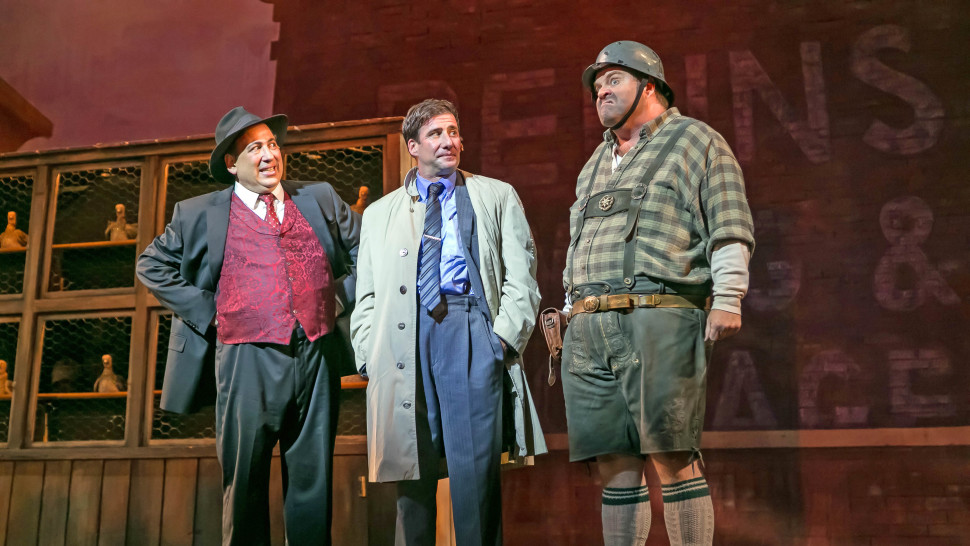 Michael Kostroff, David Josefberg and John Treacy Egan in The Producers at Paper Mill Playhouse (Photo by: Billy Bustamante).
Michael Kostroff, David Josefberg and John Treacy Egan in The Producers at Paper Mill Playhouse (Photo by: Billy Bustamante).
Pay attention to other Theater District businesses, too: Paper Mill's backdrop includes Joe Allen, a favorite theater district restaurant -- but one that didn't come into being until 1965.
(Does this sound picayune? Remember: God is in the details.)
The original 1968 film used genuine senior women as the faux objects of Max's affection while the 2001 musical employed younger actresses and made them look elderly. But if you have game senior actresses who are up to the challenge, cast them. At Paper Mill, some men are playing Old Ladies and doing the Song, Dance and March of the Falsettos. If you're in a community where everybody knows everybody, going this route will undoubtedly yield extra laughs.
This Paper Mill production was directed by Don Stephenson, who portrayed Leo Bloom in the first national tour. I didn't see his performance, but based on how he's steered David Josefsberg's Leo, I'll bet Stephenson was terrific -- because Josefsberg is.
Although Leo carries a blue security blanket, he needn't be played as an out-of-control neurotic as so many before him have been directed to do. Here, Leo comes across first and foremost as a human being who simply has a few left-over problems from childhood. The Producers has no dearth of crazies, so we don't need yet another one. Leo is often a Voice of Reason, and he’ll be more convincing if he isn’t over the top.
When auditioning a potential Roger De Bris, stress that his wearing drag also means high heels in which he’ll be required to confidently walk and dance. (Paper Mill’s Kevin Pariseau maneuvers beautifully.) However, you can cast a non-dancer as Leo. Although he's brought into a couple of production numbers, he's not supposed to be adroit at dancing. An actor with two left feet will do all right.
But Ulla must dance superbly. What’s more, when auditioning potential Ullas, remember that whomever you choose must confidently belt and hold the final note of "When You've Got It, Flaunt It" for many, many measures. At Paper Mill, Ashley Spencer's belt could have accommodated Fat Albert's waist. Don't settle for less.
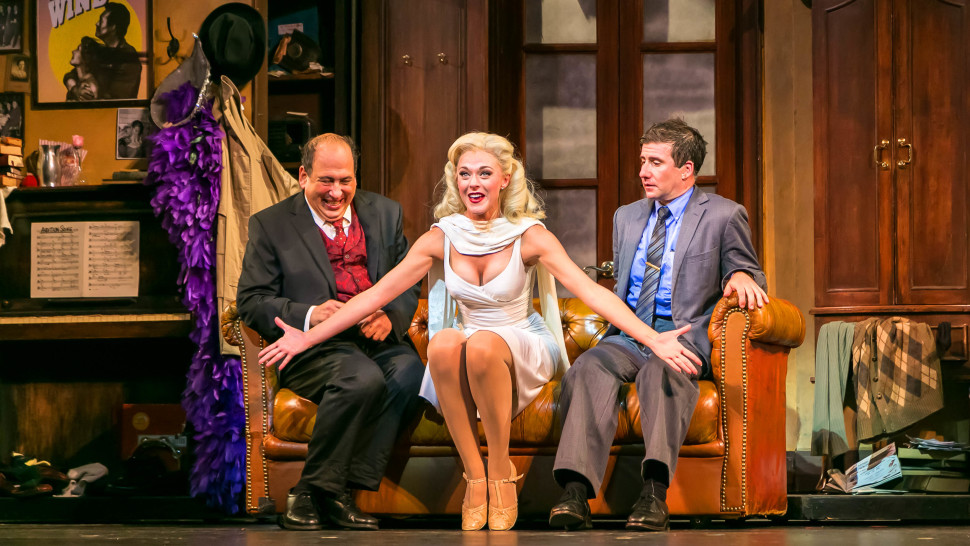
Michael Kostroff, Ashley Spencer and David Josefberg in The Producers at Paper Mill Playhouse (Photo by: Billy Bustamante).
Pay careful attention to what they do after Max proclaims "Intermission!" and pauses. This purposeful halt allows for an improvisational line. Jason Alexander in Los Angeles gave what he believed the audience was saying during intermission: "Yeah, he's good, but he's no Nathan Lane." Kostroff looks through the Paper Mill program and remarks, "The Bodyguard: The Musical???" (It's Paper Mill's next production; the audience chuckled at the thought of it.)
Directors who saw The Producers during any of its 33 Broadway previews or 2,502 performances may have been discouraged from tackling the show as soon as Act Two started. That Ulla had painted every inch of Max's office white meant that two separate office sets were needed. No, Stephenson has eliminated the sight gag, just as many other productions have. Brooks and Meehan haven't seemed to mind, so just have Ulla spruce up the place.
Laurel and Hardy, Hope and Crosby, Abbott and Costello, Redford and Newman, Carrey and Daniels: Hollywood has had "buddy pictures" for decades. But Broadway has had precious few "buddy musicals." The Producers is arguably the best of them all -- and your audience will have the best time with your two greatest male clowns up on stage.
You may e-mail Peter at pfilichia@aol.com. Check out his weekly column each Monday at www.broadwayselect.com and Tuesday at www.masterworksbroadway.com. His book, The Great Parade: Broadway’s Astonishing, Never-To-Be Forgotten 1963-1964 Season is now available at www.amazon.com.
Share
Callboard
-
Shake and shimmy it with the #Hairspray20Challenge! Join MTI and Broadway Media in celebrating 20 years of #Hairspray. Duet this here or find us on TikTok! Special thanks to @broadwaymedia and @jammyprod. Choreography Guides are a licensor official resource that provides step-by-step instruction from Broadway and professional choreographers for your productions! Visit @broadwaymedia to learn more. #mtishows #youcantstopthebeat #hairspraymusical #goodmorningbaltimore
View on Instagram









